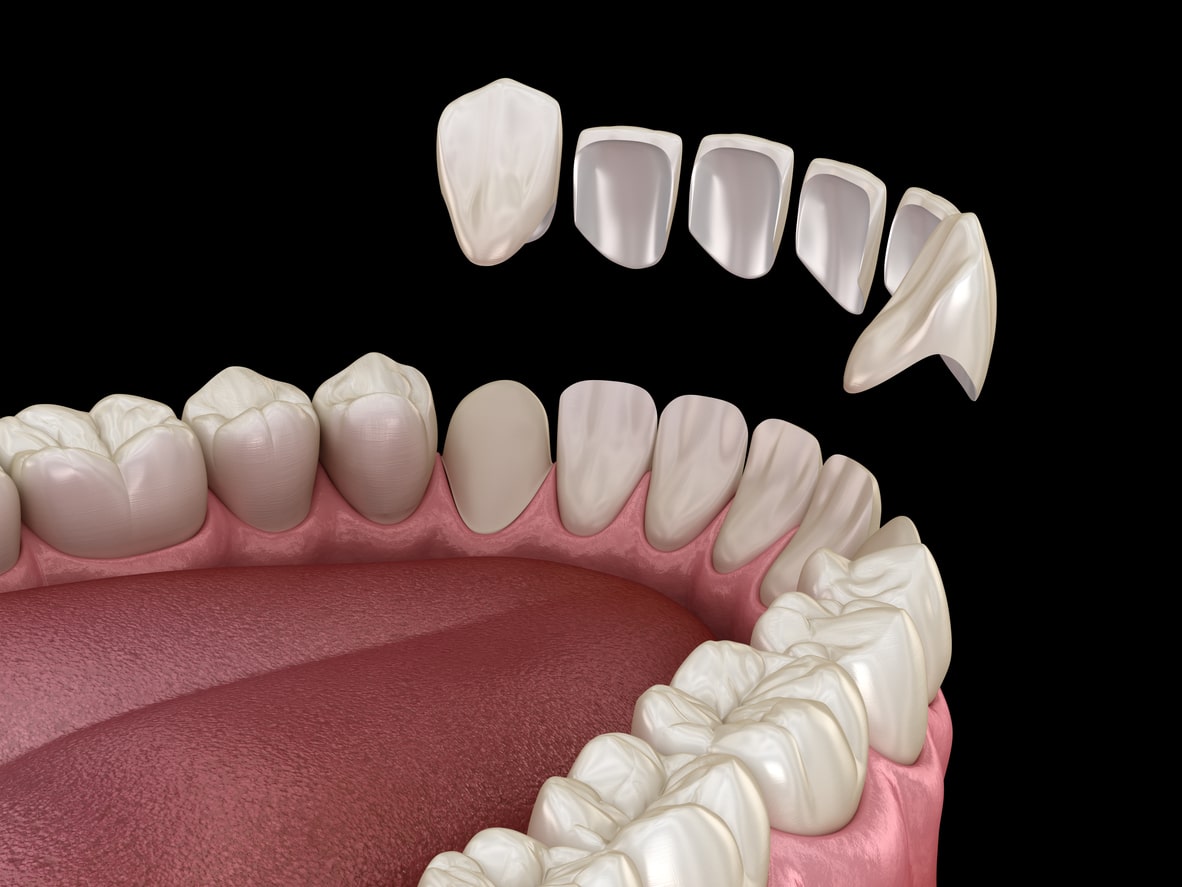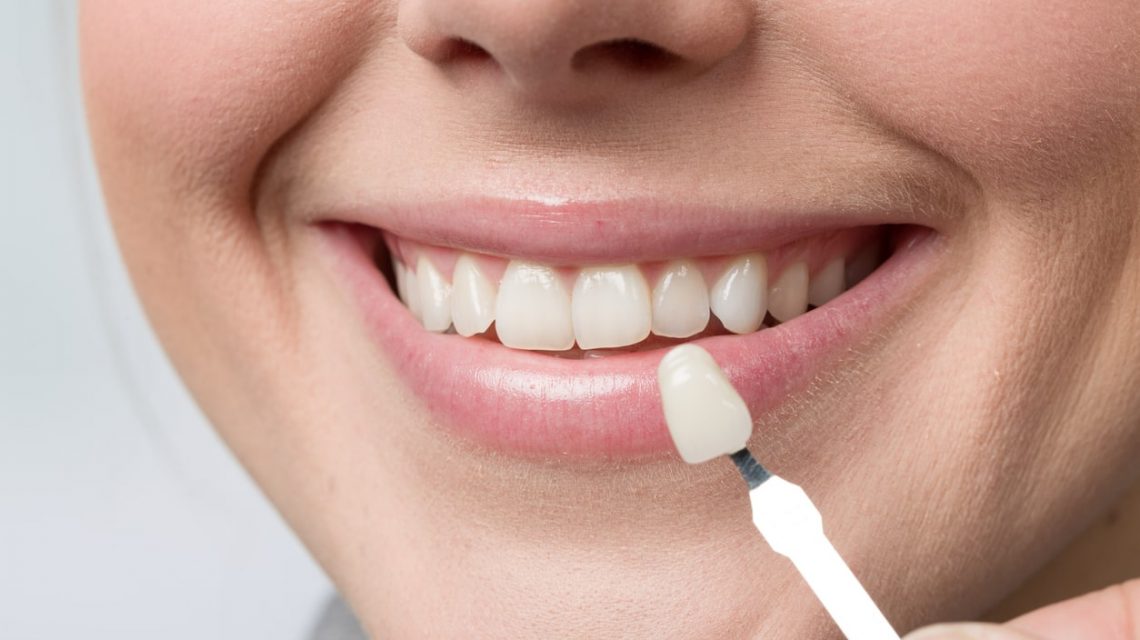Our teeth can appear unattractive to us, be it because they’re chipped, discoloured or too short. In aesthetic dentistry, we use veneers to cover the front surface of teeth to improve their appearance and correct any imperfections from wear and tear. Veneers are thin, custom-made shells that resemble natural teeth.
I’ve helped thousands of patients improve their smile with veneers since 1992, and can guarantee they’re excellent in modifying not just tooth position but also size, shape and colour. In this article, I will also talk about the experience of getting veneers here at my clinic in Singapore and how I use the SmileDesign process to create your dream smile!
Choosing a suitable dental veneer
Dental veneers are made of different materials. The type of veneer you choose depends on your aesthetic preferences, budget and tooth condition. The price will vary accordingly too.
Porcelain veneers
- Pressed porcelain veneers are made from semi-hardened porcelain blanks. They are very strong and look good too. I usually recommend pressed porcelain veneers to my patients.
- Feldspathic porcelain veneers are made from porcelain powder. They look the most visually appealing out of all the veneers, but do not really match up in terms of strength.
- Milled porcelain veneers are made from hardened blanks of porcelain. They are extremely durable but might not be the best choice if aesthetics is your concern.
- Ultra-thin, no-prep veneers are used primarily for improving the colour of teeth. Although they’ve been around for many years, they wouldn’t be my first choice as they don’t allow much changes and tend to appear unnatural.
Direct resin veneers
- Direct resin veneers are made from normal composite fillings. They are rather straightforward to put on and require only one clinic visit.
- Out of all the veneers available, direct resin veneers are the cheapest.
- They are however not very strong and stain easily.
Indirect composite veneers
- Made also from composite fillings but produced in a laboratory.
- They are slightly stronger and cost about the same as porcelain veneers, but they have the same drawbacks as direct resin veneers so I do not use them in my practice.

Market price for dental veneers
| Type | Cost per tooth |
|---|---|
| Porcelain veneers | $1000-$2500 |
| Direct resin veneers | $200-$300 |
| Indirect composite veneers | $250-$1500 |
The total cost depends on the number of teeth. I usually charge about $1300 per veneer, but of course would be happy to offer a discount for multiple teeth. This price includes a full package — impressions, designs, temporaries and scaling and polishing.
How long should dental veneers last, and are they suitable for everyone?
When well taken care of, veneers can last up to 30 years or even longer. To ensure maximum longevity of your veneers, be careful not to bite onto very hard objects like crab shells or bones. You should also go into the procedure with healthy gums and teeth to avoid any complications. With veneers on, your teeth should be protected from decay.
I wouldn’t recommend veneers for girls below 16 and boys below 17, as their teeth might not be fully erupted.
Process of getting veneers with Smiledesign
In 2001, I developed Smiledesign to involve patients more in their dental procedures. Previously, we could only explain to patients what we were going to do to their teeth without them having a visual example of what the end result would look like.
Smiledesign allows the dentist and patient to work together to create a dream smile that’s both beautiful and realistic. We take into consideration the patient’s age, face shape, skin colour and surrounding teeth. As veneers are placed on top of teeth, it’s important the patient is satisfied with how they look.
The process of getting veneers with me typically goes like this:
- During the initial consultation, I discuss with you everything you need to know about veneers, choose the veneers and discuss costs
- Upon approval, digital impressions are taken of your teeth to prepare the design
- Once you are happy with the design, we will go ahead and create the veneers
- In the meantime, we will fit on temporary plastic veneers on your teeth
- Once the veneers are ready, we remove the temporary ones and place on the final restorations
In order for dental veneers to look good on YOU, it has to look natural and fit in with your surrounding teeth — even if it means getting a veneer that isn’t pearly white. I consider dental veneers part of aesthetic dentistry. In aesthetics, the goal is to obviously help the patient look better but with some element of naturalness. Just like how you wouldn’t get lip fillers that look too unnatural and endanger your health, I’m sure you wouldn’t get veneers that stick out like a sore thumb and cause you health issues.
End note
I hope this article gave you a better understanding on what veneers are used for and what you can expect if you decide to get veneers with me. Feel free to drop me a line if you have any questions!
References
- Peumans, M., Van Meerbeek, B., Lambrechts, P., & Vanherle, G. (2000). Porcelain veneers: a review of the literature. Journal of dentistry, 28(3), 163–177. https://doi.org/10.1016/s0300-5712(99)00066-4
- Silva, B., Stanley, K., & Gardee, J. (2020). Laminate veneers: Preplanning and treatment using digital guided tooth preparation. Journal of esthetic and restorative dentistry : official publication of the American Academy of Esthetic Dentistry … [et al.], 32(2), 150–160. https://doi.org/10.1111/jerd.12571


